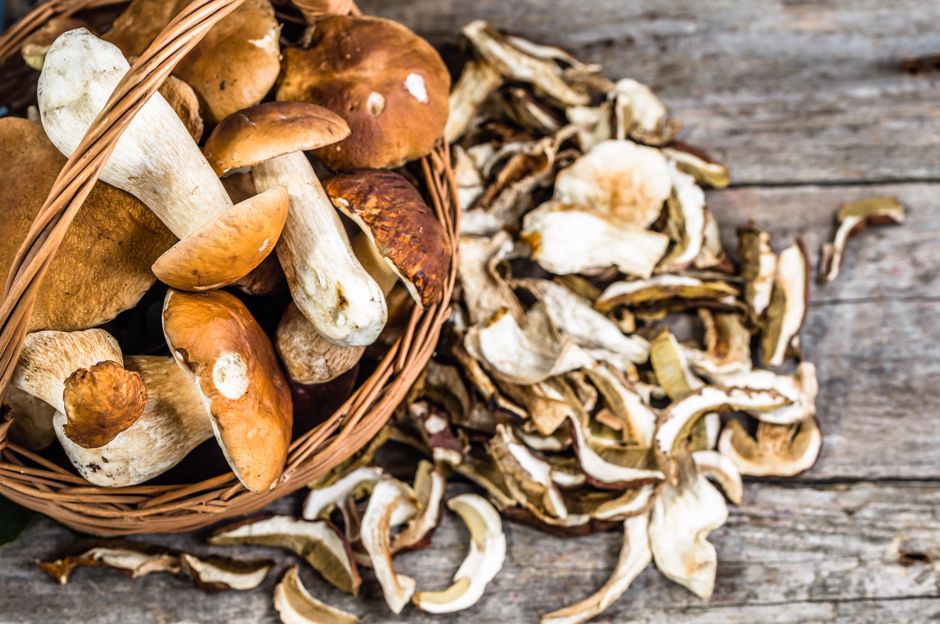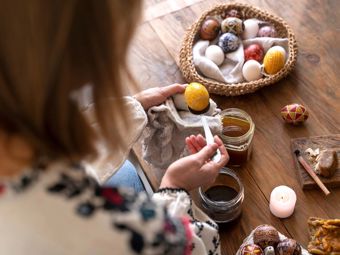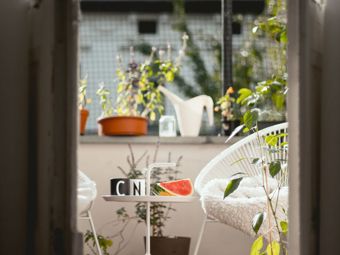Let us just briefly recall the basic rules on how to handle mushrooms: only pick the types you can safely identify and take a basket or fabric bag to carry them, as they are likely to begin to ferment in a plastic bag. Clean the stem by shaving or scraping using a knife, remove dirt from the cap by a damp cloth, but try not to water the mushrooms excessively.
Dried Mushrooms: the Best Ways of Drying and Storing
The easiest method is using a dryer. If you do not have one, place the mushrooms (unspoilt, not worm-eaten), cut to approximately 3 mm thick slices, on frames with a net, allowing air access from all sides. You can also string the mushroom slices like beads and dry them in a slight draught to prevent them from going mouldy. It is also possible to dry the mushrooms on parchment paper, but they will turn black due to insufficient air access and it will take longer for them to dry up. Towards the end of the drying, you can increase the heat to 50–70 °C to make the slices crispy.
You can also dry or sterilise the mushrooms in a hot air oven.
Properly dried mushroom slices should break when bent. To make them last longer and preserve the maximum amount of taste and aroma, place the dried slices to dry jars, close them tightly, and sterilise in a hot air oven for 15–20 minutes at 90 °C.
Which Mushrooms Are Unfit for Drying?
- golden chanterelles
- polypores
- blushers
- puffballs
- honey fungi
- red cracking boletes (can be dried but the parasitic fungus, bolete eater, might appear on them)
Frozen Mushrooms: How Long Will They Last?
You can also freeze mushrooms, but beware! They will only last for half a year when frozen, so consume them before the winter ends. Contrary to popular belief, even raw mushrooms can be frozen, but it is necessary to seal them off, otherwise their smell will transpire to everything in your freezer. If you want to be sure that you do not freeze an unnecessary amount of mycotoxins, it is advisable to stew the mushrooms in boiling water for about five minutes before freezing them, which also shrinks them and they will take up less space in the freezer.
Mushroom Pickling and Salting
The best mushrooms to be pickled in brine are the small, hard types like the golden chanterelles, honey fungi, and any boletes. Ideal are very small ones, which you can leave in one piece. Prior to pickling, boil the mushrooms in salted water with a piece of celery, let them drip off and cool down. Transfer them to jars, add onion, garlic, and root vegetables according to your preferences, and pour cooled pickle. For 2 kilograms of mushrooms, prepare the pickle as follows: boil 500 ml of water with 125 ml of vinegar, 2 teaspoons of sugar, several whole peppercorns and allspice berries, mustard seed, 2 bay leaves, and salt. Close the jar lid tightly and sterilise for 20 minutes at 90 °C.
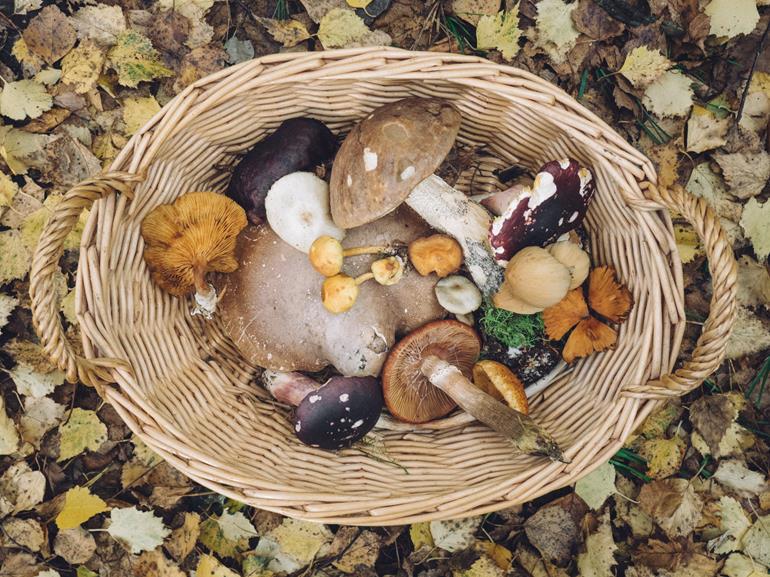
To preserve mushrooms in salt, you will need smaller, hard, and dry mushrooms. Cut them into quarters, lay them out on a tray, and leave them to wilt for a few hours. Tuck the dried mushrooms in jars and add salt, ideally pre-dried in an oven, over the individual layers. Use roughly 250 g of salt per one kilogram of mushrooms, with the last layer being salt. You can store the closed jars in a dark and cool place for about half a year. Mushrooms cured with salt are suitable for soups and sauces – remove excessive salt before use and only add small quantities of salt to the finished meal.
Make mushroom salt!
Crush the dried mushroom slices in a mortar into a fine powder, add salt according to your preferred taste and intensity of the seasoning mix, which you can also flavour with dried parsley and ground black pepper. Store in a closed jar.
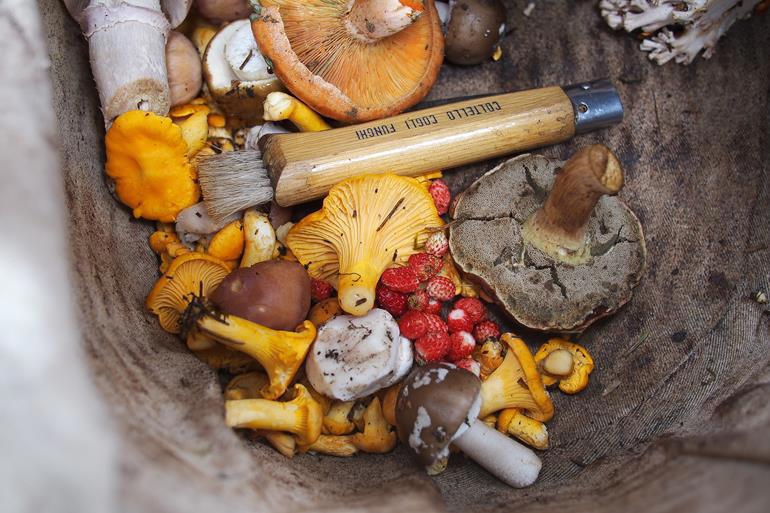
Mushroom Purée and “Cracklings” in Fat
You can use lower-quality mushrooms or their parts (e.g., stems) to make purée. Cut the mushrooms and stew them in a small amount of water, mix well, add water to attain pasty consistency, and boil quickly. Season with salt, pepper, and caraway, pour the boiling thick liquid into clean jars, close the lids, and turn the jars upside down. The purée will last for up to a year and can be used as a spread or base of various sauces. If the lid fails to seal the jar, store the purée in a fridge and use it as soon as possible.
To make mushrooms preserved in fat, stew cleaned and cut mushrooms (ideally hard, gilled types) in lard or oil. Add salt, and a pinch of ground black pepper and caraway, if you want. Stew until the mushrooms are rendered down to cracklings, place them in smaller jars, and pour the hot lard from the pan over them. Put the lids on, remove air bubbles from the contents, and turn the jars upside down. The mushroom cracklings will last about three months in a fridge.

